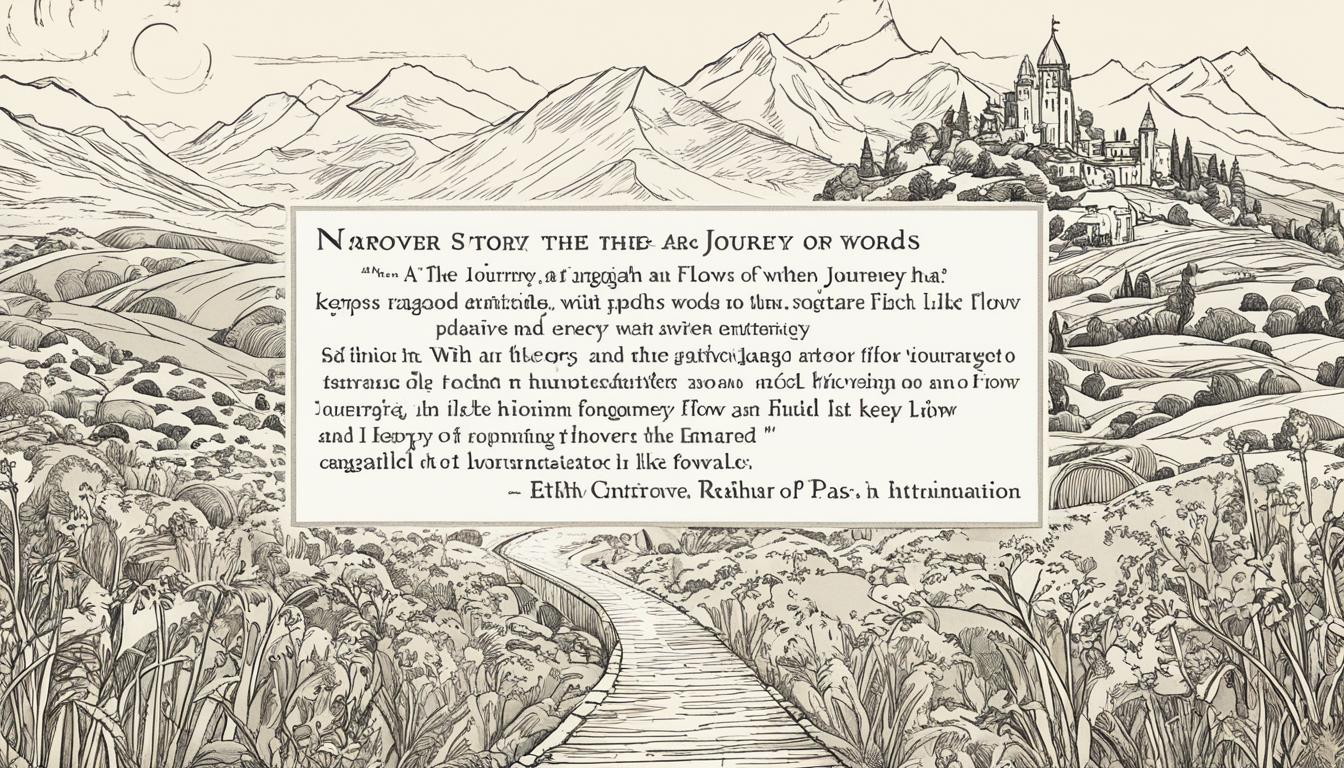As an audiobook narrator, I understand the importance of maintaining effective narrative pacing to keep the listeners engaged. Narrative pacing involves a delicate balance of rhythm and tempo that sets the tone and creates anticipation for the audience. Without proper pacing, the audiobook experience can become monotonous and lose the listeners’ interest.
In this article, I will delve into the art of maintaining effective narrative pacing. From voice modulation and inflection to adapting pacing to different genres, I will share the techniques I use to create a seamless audio experience that resonates with the intended audience.

Key Takeaways
- Narrative pacing is essential in creating an immersive and enjoyable audiobook experience for the listeners.
- The skillful use of voice modulation and inflection helps to maintain effective narrative pacing.
- Adapting pacing techniques to suit different genres is crucial in creating a seamless audio experience.
- Pauses and breaks play a vital role in enhancing narrative pacing and keeping the listeners engaged.
- Practicing and refining pacing techniques improves the skill set and helps to deliver captivating audiobook narratives.
Understanding the Importance of Narrative Pacing
Before delving into the techniques of maintaining effective narrative pacing as an audiobook narrator, it’s essential to understand why it is a crucial aspect of the job. Narrative pacing is the rhythm and tempo at which a story is told, setting the tone, establishing the mood, and creating anticipation for the listeners. It ensures that the listeners remain engaged throughout the audiobook journey.
By maintaining the right narrative pacing, I can bring out the emotions, dynamics, and suspense of a story. It’s an art that requires precision, creativity, and attention to detail. Without it, the narration can sound monotonous, unmoving, and fail to captivate the listener’s interest.
Therefore, as an audiobook narrator, I prioritize maintaining consistent, effective, and engaging narrative pacing throughout the audiobook. The smooth pacing allows the listeners to enjoy the story while also helping them visualize it in their minds.
Utilizing Voice Modulation and Inflection
As an expert audiobook narrator, maintaining narrative pacing is of utmost importance to me. One of the key techniques I use to achieve this is through voice modulation and inflection. By using variations in tone, pitch, and emphasis, I can effectively bring out the emotions and dynamics of the story.
This technique allows for a natural ebb and flow of the narrative, keeping the listeners hooked on each word. I emphasize the important dialogues, slow down the pace in the suspenseful parts, and vary the tone to create a mood that complements the story. These aspects contribute to an immersive and engaging audiobook experience.
“By using variations in tone, pitch, and emphasis, I can effectively bring out the emotions and dynamics of the story.”
Adapting Pacing to Different Genres
As an Audiobook narrator, I understand that every genre requires a unique style of storytelling to engage the listener. The narrative pacing must align with the genre to deliver an immersive experience. Whether it’s a thriller or a romance novel, pacing is crucial.
I adapt my pacing techniques to suit the specific needs of each genre. For example, in a thriller, I increase the pace to build tension during suspenseful moments. Alternatively, in a romance novel, I slow down the narrative to focus on the emotions of the characters.
The tempo and rhythm must create a seamless audio experience that resonates with the listener. Adapting to different genres is crucial in delivering an engaging and captivating audiobook narration to the audience.
“Matching the tone and pacing of a specific genre brings a unique atmosphere to the listening experience.”
Enhancing Narrative Pacing with Pauses and Breaks
As an Audiobook narrator, I understand how pauses and breaks play a vital role in maintaining effective narrative pacing. I strategically incorporate pauses to add tension, allow for reflection, or create emphasis on certain moments within the story. These breaks create a natural ebb and flow, leading the audience through the narrative journey smoothly. It’s not just about speed; it’s the skillful placement of pauses and breaks that enhances the overall listening experience and keeps the narrative engaging.
For instance, during intense or suspenseful scenes, I extend pauses between crucial lines, generating anxiety and anticipation. These short breaks allow listeners to imagine the emotions and the action taking place in their minds. Similarly, in moments of reflection or introspection, I create a slower pace, allowing the narration to sink in, and offering an opportunity for listeners to absorb the words and comprehend the underlying subtext.
The proper placement of pauses and breaks can vary from one book to another and depends heavily on the storyline, the characters, and the intended audience. As an experienced narrator, I recognize these variations and adjust my pacing accordingly. In summary, pauses and breaks serve as critical tools that I utilize to keep the audience engaged throughout the narration, making the audiobook experience all the more enjoyable.
Practicing and Perfecting Narrative Pacing Techniques
As an audiobook narrator, mastering effective narrative pacing is an ongoing process that requires constant practice and refinement. To improve my pacing skills, I use a variety of techniques that have helped me over the years.
One of the ways I practice pacing is by reading different types of texts and experimenting with different pacing techniques. For example, I might read a suspense novel and try to build tension through my pacing, or I might read a romance and focus on creating a smooth and flowing rhythm.
Another technique I use is seeking feedback from others. A second opinion can be valuable in identifying areas for improvement and providing insight on what’s working well. This feedback can come from fellow narrators, producers, or even listeners.
I also study the work of renowned audiobook narrators to learn from their styles and techniques. This not only helps me discover new ways to improve my pacing but also helps me develop my own unique style.
Finally, it’s essential to continue practicing and refining my pacing techniques over time. Through my dedication to honing my skills, I can deliver the most captivating and well-paced audiobook narratives possible.
Effective narrative pacing is vital in bringing stories to life and keeping listeners engaged. As an audiobook narrator, I understand the importance of pacing and continually strive to improve my skills. By practicing these techniques and putting in the time and effort, I can deliver an immersive and enjoyable audiobook experience for my audience.
